Bordeaux proudly calls itself the “world capital of wine”. Another nickname is the “sleeping beauty”. For a long time, the city wasn’t well-known as a travel destination. The city was, as it were, asleep until Bordeaux was discovered as an ideal city for a city break. The nickname “port of the moon” is also frequently used. This is derived from the shape of the Garonne river. This river flows through Bordeaux in a curve that strongly resembles a half-moon. The “pearl of Nouvelle-Aquitaine” is yet another nickname. This underscores that Bordeaux, with its beautiful architecture, heritage, and unique location, is the pride of the region. We set out to investigate whether these nicknames are justified.
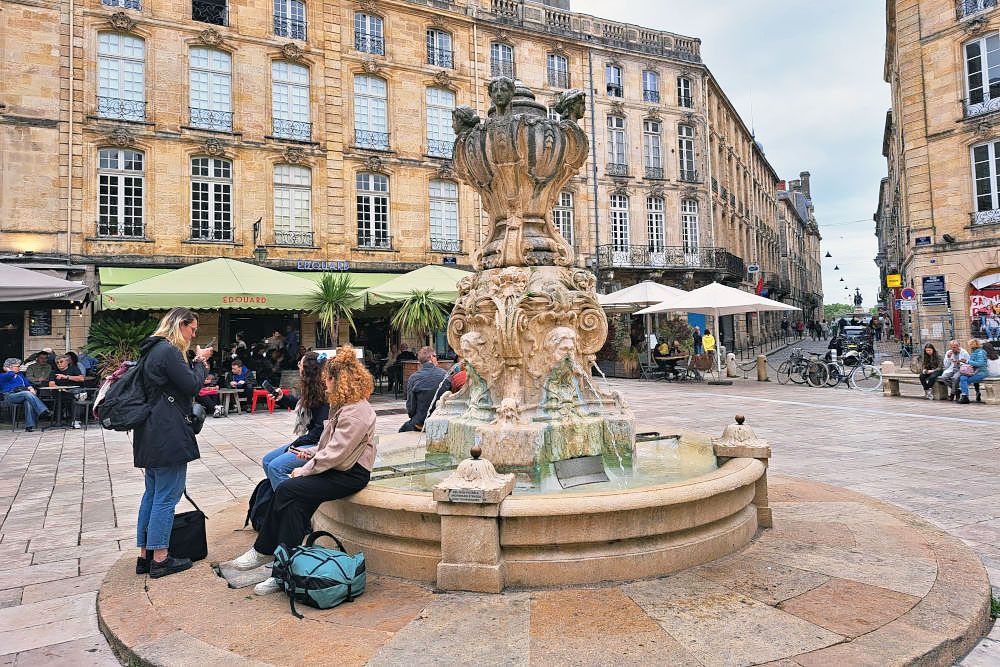
Bordeaux, world capital of wine
Bordeaux lies at the heart of one of the world’s most renowned wine regions. For centuries, Bordeaux has been synonymous with wine of unparalleled quality and refinement. With over 6,000 wineries and some of the most famous châteaux, such as Margaux, Lafite Rothschild and Latour, Bordeaux produces top wines. They are beloved by wine enthusiasts worldwide. The unique terroirs – a combination of soil, climate, and craftsmanship – give Bordeaux wines their characteristic flavour profile. From the powerful and full-bodied red wines of the Médoc to the delicate and elegant wines of Saint-Émilion.
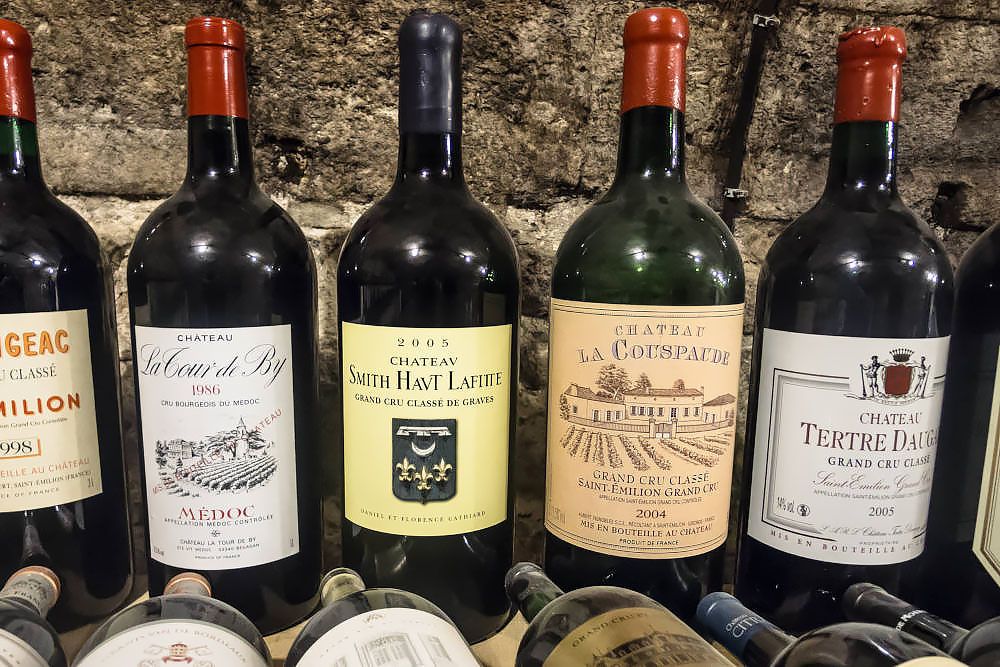
Highlight: Cité du Vin
A visit to Bordeaux is not complete without stopping by the Cité du Vin. This is not an ordinary museum, but a true experience for your senses. Here you discover everything about wine, from its history to the production process. Don’t forget to go to the eighth floor for a glass of wine with a panoramic view of the city!
The architecture of the building is already a work of art in itself. Gnarled vines, wine swirling in a glass, eddies in the Garonne. Just some associations you get when looking at the artistic building. It’s also interesting that the building changes with the sunlight. The reflections in the Garonne create beautiful images. The interior design is also unique, what an extraordinary building!
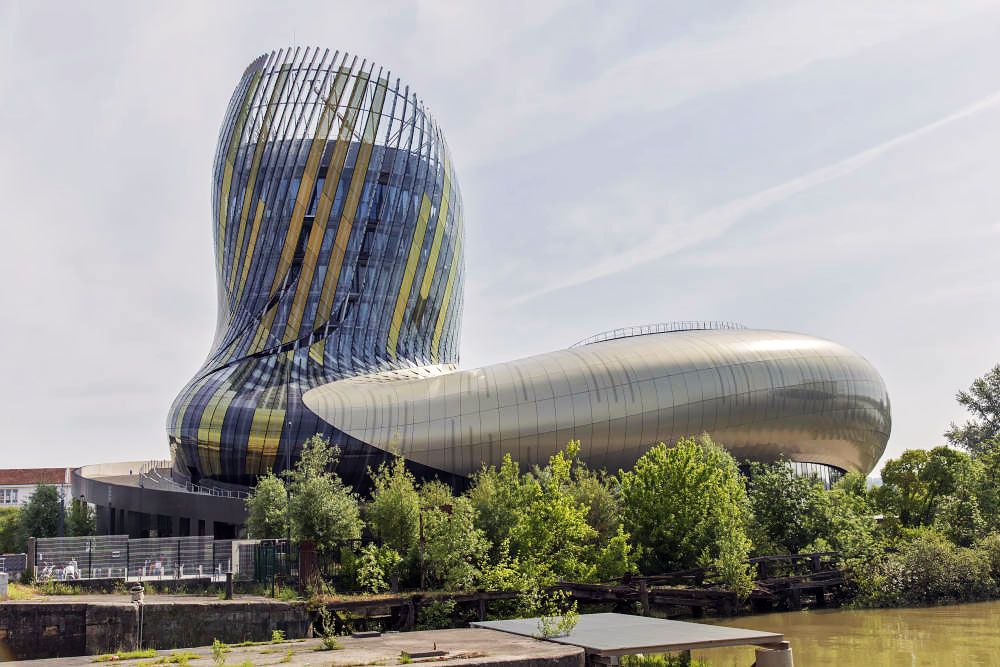
We could have spent a day in Cité du Vin, there’s so much to see and taste. It’s nice that the museum doesn’t concentrate on the Bordeaux wine region. No, the entire world production of wine is highlighted. The interactive exhibition on the history of wine and wine production is an experience in itself. An excellent audio tour (also available in English) adds the extra dimension to the exhibition. The multimedia presentation in the museum is unparalleled. Later, we’ll come back to Cité du Vin in more detail in a blog. With this museum, Bordeaux certainly deserves the nickname world capital of wine. First tick earned! ✅
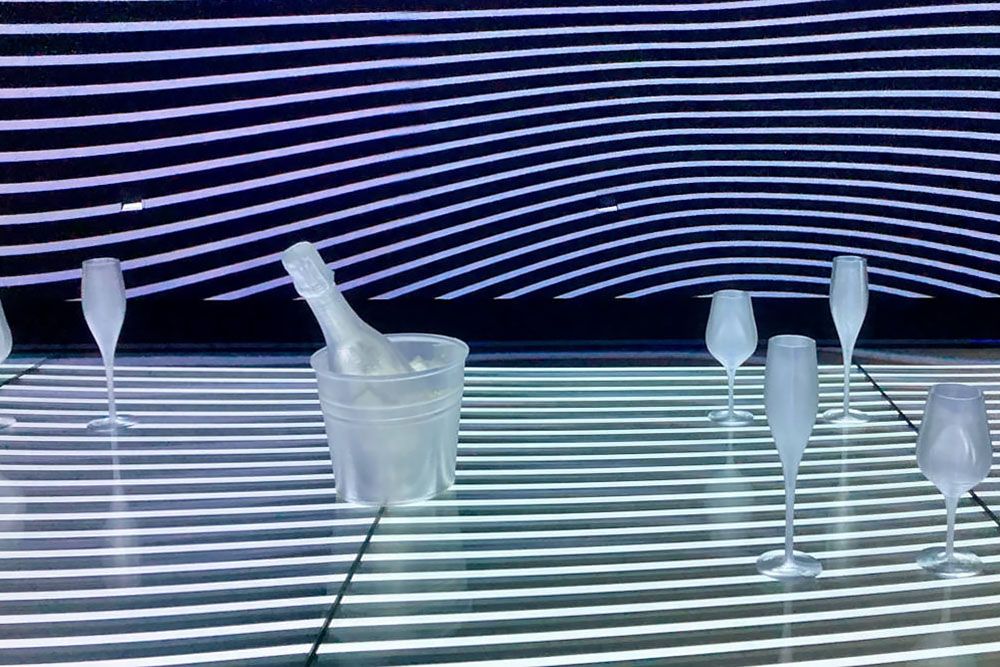
Bordeaux, the sleeping beauty
To experience the hidden beauty of the city, we set out with guide Fleur. We couldn’t wish for a better companion. She is the author of the book “111 Places in Bordeaux That You Shouldn’t Miss“. Unfortunately, it’s only available in French. If you’re proficient in that language, you have a fantastic city guide that describes the most special places in Bordeaux.
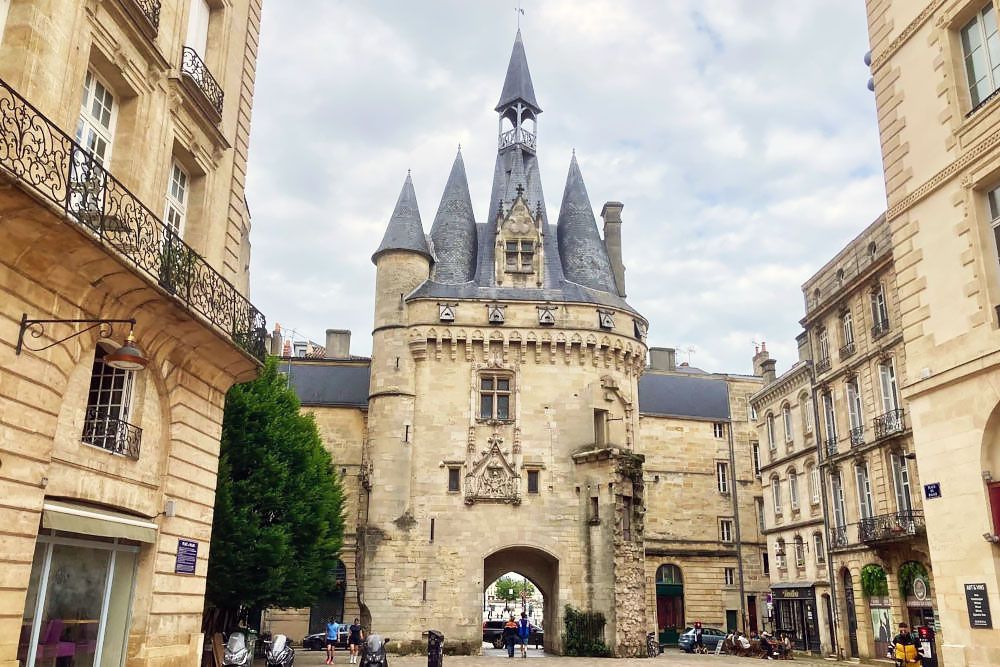
The Chartrons district
We begin our tour in the Chartrons district. This “Quartier des Chartrons” is one of the most characteristic and lively neighbourhoods of the city. Originally, this area was home to religious orders, including the Carthusians. This is where the district gets its name from. From the 18th century, Chartrons grew into the centre of the wine trade in Bordeaux. Many foreign merchants settled here and built large wine warehouses and elegant mansions. The architecture in Chartrons reflects the rich history of the district. Here you’ll find a mix of large, stately buildings, narrow streets, and charming squares. Rue Notre-Dame is one of the most famous streets in the district. The street is full of antique shops, boutiques, art galleries, and cosy cafés. Rue Notre-Dame gives a good impression of the authentic character of Chartrons.
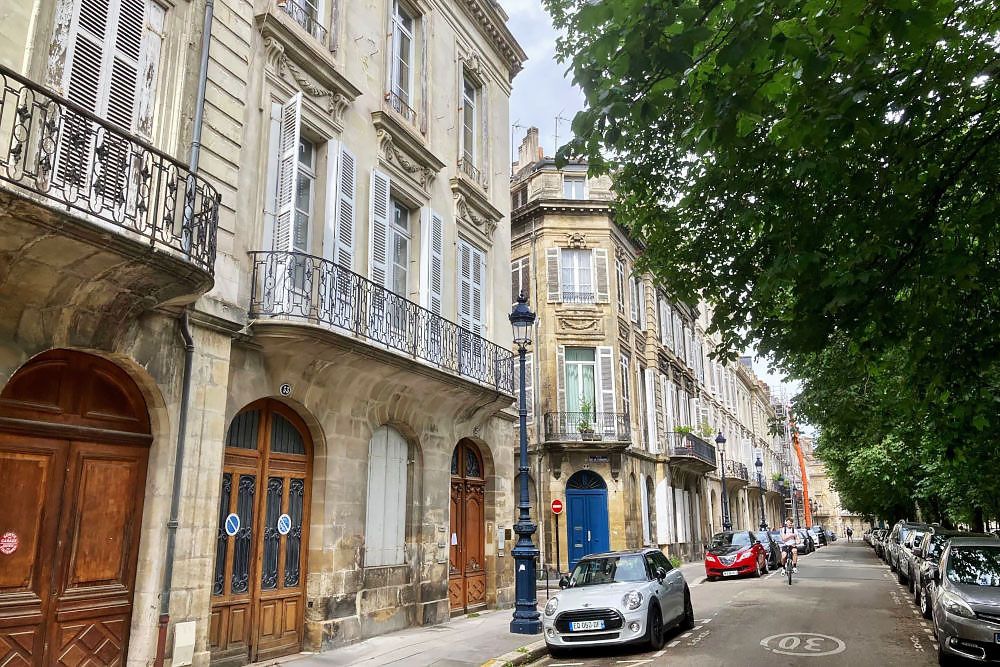
Place des Quinconces
Place des Quinconces is one of the largest city squares in Europe. This immense square has an area of about 25 football fields. It’s not only an important historical and cultural monument. It’s also a popular meeting place for both residents and tourists.
Place des Quinconces was laid out in the early 19th century. The square owes its name to the peculiar way in which the trees are planted. A “quincunx pattern” was used for this. A term that refers to a staggered arrangement of trees or objects. On one side of the square, you have a view of the Garonne river, while the other side is dominated by the monumental Monument aux Girondins.
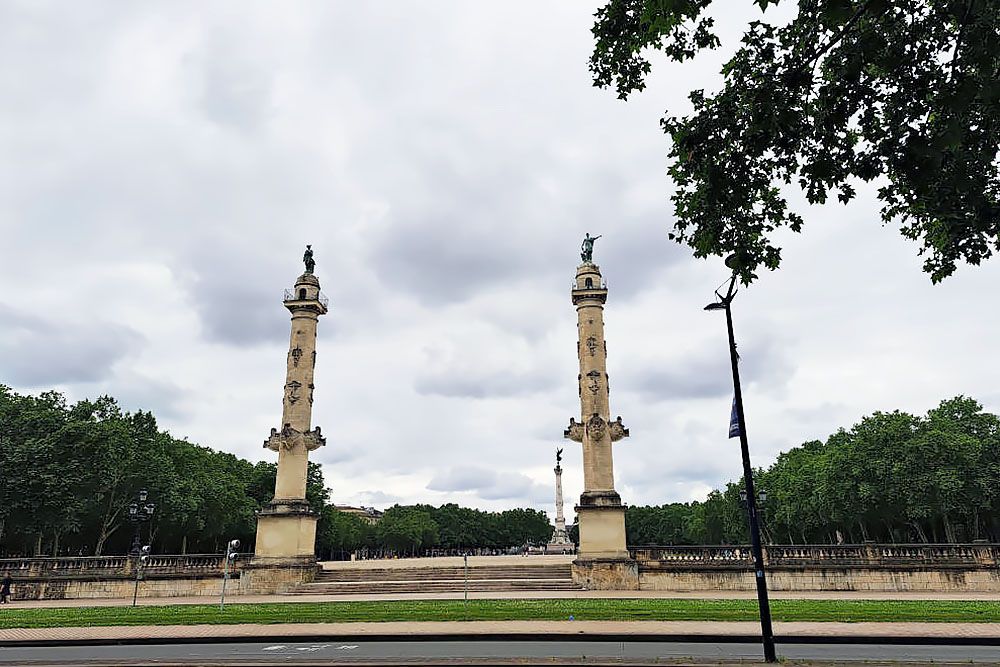
Monument aux Girondins
The Monument aux Girondins is one of the most impressive monuments in Bordeaux. It is a tribute to the Girondins, a political group that played a crucial role during the French Revolution.
The Monument aux Girondins consists of several elements. The most striking part is the 54-metre-high column that forms the central point of the monument. Atop this column stands a bronze statue of Liberty, breaking her chains and triumphantly holding up a palm leaf. At the foot of the column are two large fountains, lavishly decorated with bronze statues of horses, warriors, and allegorical figures representing Liberty and the Republic.

Place de la Bourse
Place de la Bourse is undoubtedly one of the most iconic and photographed places in Bordeaux. This square, located on the banks of the Garonne river, is a splendid example of the elegant architecture that characterises the city. Place de la Bourse was laid out in the 18th century. The square was intended to showcase the grandeur and prosperity of Bordeaux. It was designed by the architects Jacques Gabriel and his son, who were also the master builders of the Palace of Versailles.
What makes Place de la Bourse so special is its symmetrical and harmonious architecture. The square is surrounded by beautiful, classically designed buildings with elegant facades and graceful balconies. The most prominent building is the Palais de la Bourse, which once served as a stock exchange and now houses the Customs Museum. On the other side of the square, you’ll find the Hôtel des Fermes, where tax revenues were once managed.
One of the most striking and modern additions to Place de la Bourse is the Miroir d’Eau (“water mirror”). This large and shallow body of water reflects the buildings of the square. Especially at sunset, this water creates a beautiful reflection. A mist that seems to hover over the square also regularly forms. This magical effect attracts hundreds of visitors daily, especially during hot summer days.
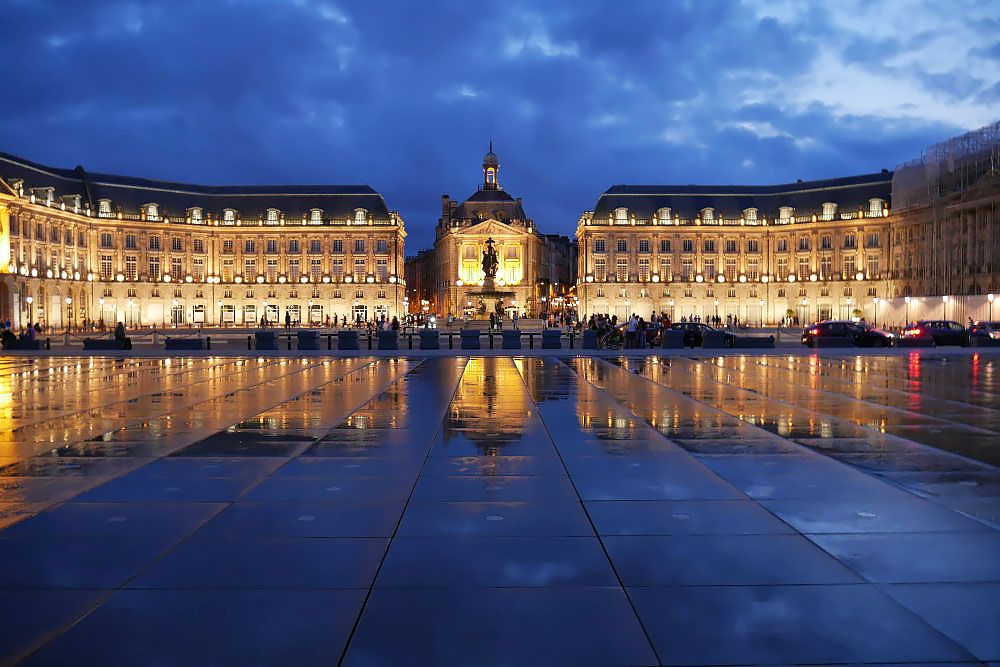
Grand Théâtre de Bordeaux
The Grand Théâtre de Bordeaux on Place de la Comédie is an architectural jewel. The Grand Théâtre opened its doors in 1780. This theatre is a beautiful example of neoclassical architecture. Twelve majestic Corinthian columns dominate the facade. Inside the theatre, the luxurious decor is immediately noticeable. The interior is richly decorated with velvet and marble. In the grand hall, with its royal blue and gold colours, the chandelier immediately draws attention. It is a masterpiece in itself.
After seeing all those monumental buildings and squares, we know it: we’re glad the sleeping beauty has awakened. Because Bordeaux is a city that invites you to enjoy a lively city with a great atmosphere. Another tick earned! ✅
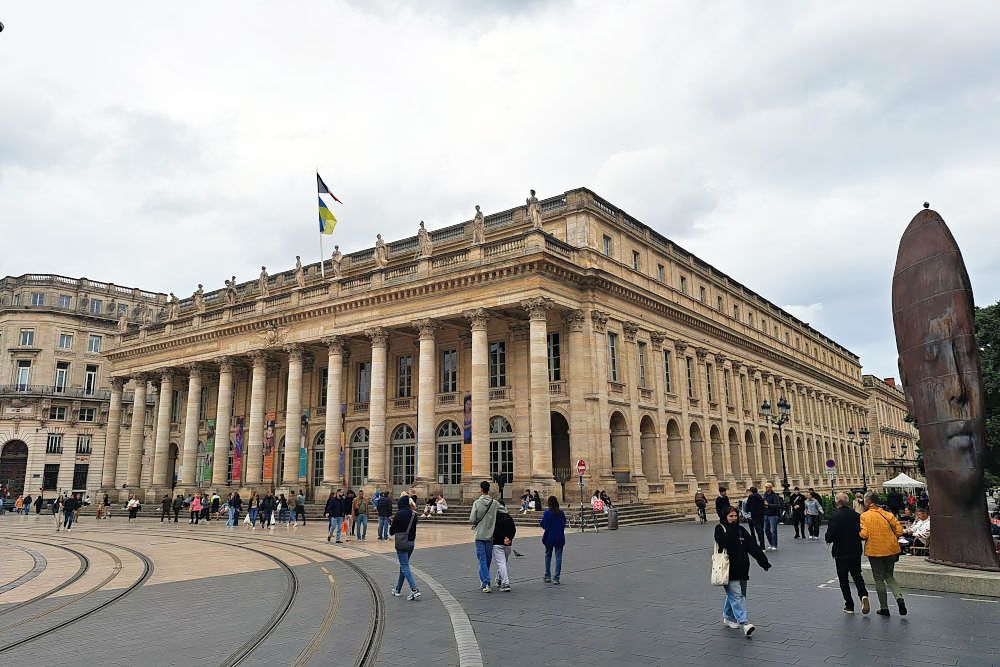
Bordeaux, port of the moon
After saying goodbye to our guide Fleur, we set out to explore Bordeaux’s maritime past.
Bacalan
From the beautiful and unique Renaissance Bordeaux hotel, we walk along the water through the Bacalan district. This is a former port area in the north of Bordeaux. In the past, you wouldn’t want to come here. It was dangerous, raw, and the neighbourhood was dilapidated. In recent years, Bacalan has been transformed into a vibrant district with modern amenities. Attractions include the Halles de Bacalan (the food halls), trendy hotels, various restaurants, and cultural hotspots. Bacalan is now a perfect mix of industrial heritage and contemporary urban development.
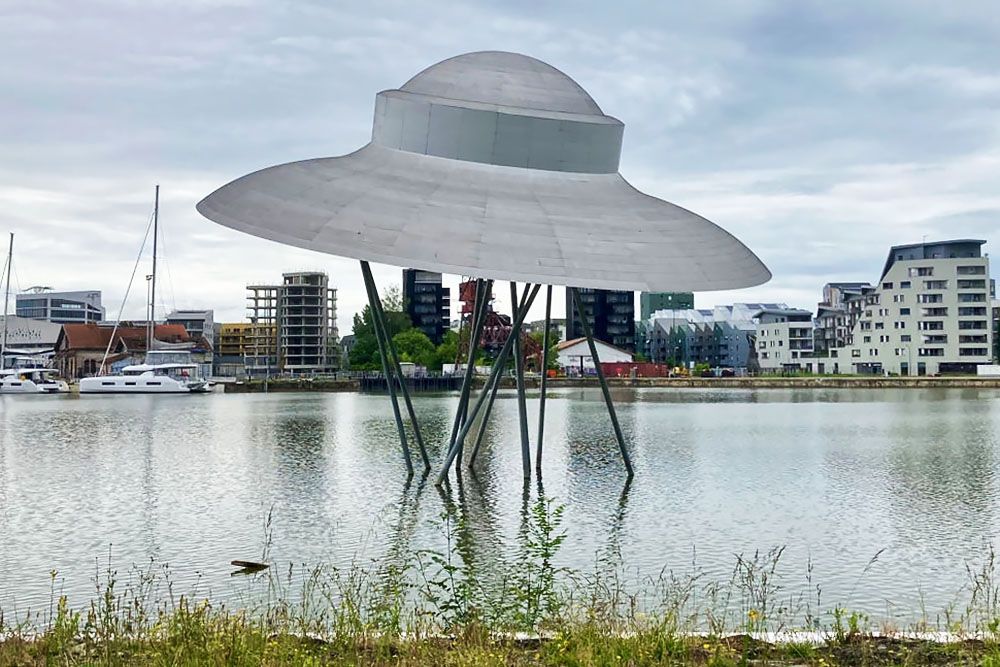
Bassin des Lumières
Our walk through Bacalan ends at Bassin des Lumières. This former German submarine base from World War II is now a unique digital art centre. It offers a spectacular experience where art, light, and technology come together.
During World War II, the Germans built a huge concrete bunker here to protect their U-boats. The complex was one of the Nazis’ most important submarine bases in France.
Now, Bassin des Lumières is a place where art literally comes to life. In the large, dark spaces of the former bunker, artworks are projected onto walls, ceilings, and even onto the water. This unique environment makes the art experience totally different from a traditional museum.
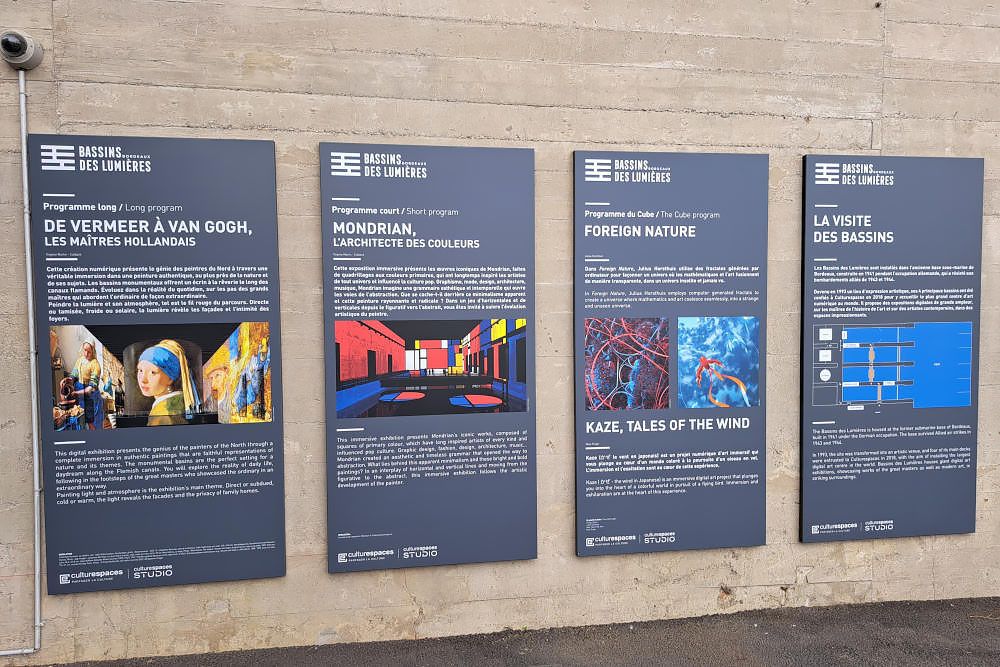
We are fortunate that during our visit, the exhibition “From Vermeer to Van Gogh” is being shown. Overwhelmed by the visual spectacle, we see the masterpieces of the Dutch masters in a completely new dimension. Images of Vermeer, Rembrandt, Van Gogh, and other greats are projected in gigantic formats. Meanwhile, music and light installations stimulate our senses. It’s as if we’re walking through the paintings and becoming part of the artworks ourselves.
The works of Vermeer, such as “The Milkmaid” and “Girl with a Pearl Earring”, come to life impressively with their subtle colours and soft lighting. The vivid and expressive paintings of Van Gogh, such as “Starry Night” and “Sunflowers”, take us into his world of emotion and colour.
Until 5 January 2025, you have the chance to visit this magnificent digital exhibition. The exhibition that will follow is not yet known.
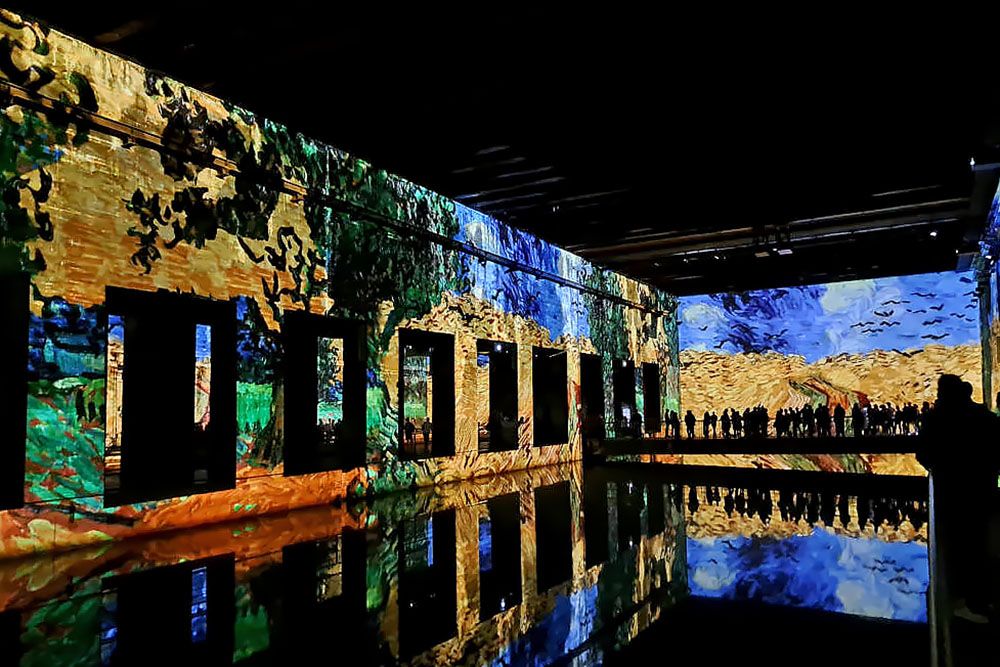
Strolling along the Garonne
From our hotel, we now stroll towards the centre. The wine museum Cité du Vin glistens in the sun. From here, we walk southwards along the left bank of the Garonne. We pass the charming Quartier des Chartrons. As we walk further, we see the imposing Place de la Bourse looming, the beautiful square bordering the river.
We cross the Garonne via the historic Pont de Pierre. It’s an iconic bridge with 17 arches that was built on Napoleon’s orders. Once on the other side, on the right bank, we follow the path northwards through the tranquil Parc aux Angéliques. Here we enjoy the greenery and the view of the city across the river. As we walk further, we see in the distance the modern Pont Jacques Chaban-Delmas. It’s an impressive lift bridge that will lead us back to the left bank. We cross the bridge and arrive back at the Cité du Vin.
During this walk, we’ve clearly seen the curve of the Garonne. It indeed resembles a half-moon. In Bacalan, we’ve admired the old port quarter with Bassin des Lumières as a brilliant highlight. We can now tick off the nickname “port of the moon” as well!✅
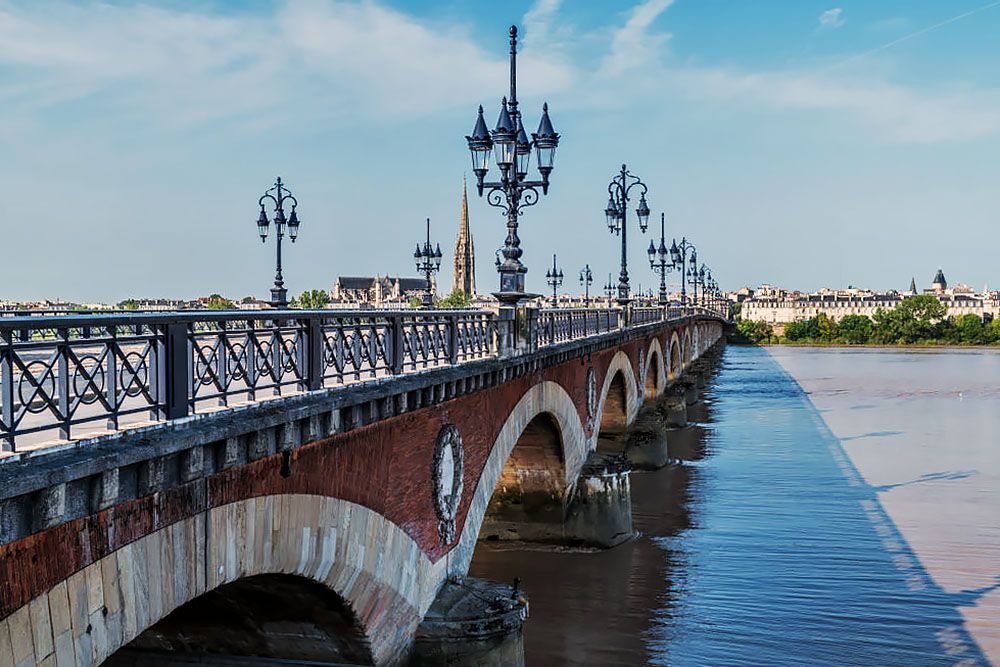
Bordeaux, pearl of Nouvelle-Aquitaine
After our two days, we’re convinced. All of Bordeaux’s nicknames are more than justified! The highlights of Bordeaux are so numerous that we really ran short of time. Next time, we definitely want to stay longer. Also because we haven’t even had the chance to visit the wine regions around Bordeaux yet. And as a wine lover, you really shouldn’t miss that! That’s why Bordeaux as a destination for a city break is a great idea. With this, the last tick is also in. Bordeaux is the pearl of Nouvelle-Aquitaine. ✅
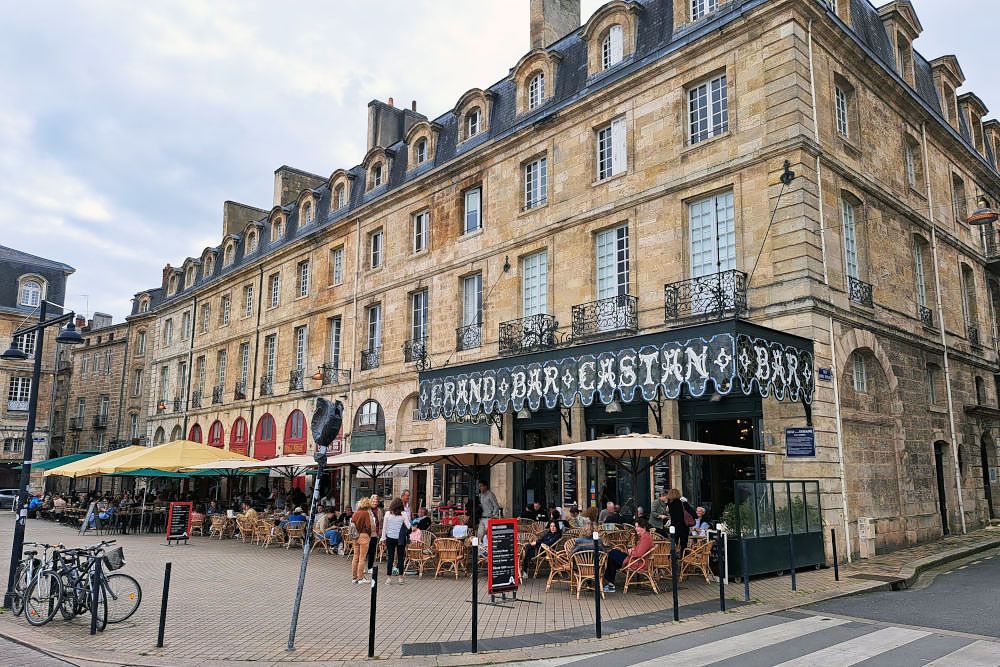
FAQs about a city break to Bordeaux
Bordeaux is located in southwestern France, on the banks of the Garonne river, in the Nouvelle-Aquitaine region.
You can reach Bordeaux by train (direct TGV connection from Paris), by car via French motorways. Keep in mind that you need an environmental sticker in the centre of Bordeaux. By plane, you can reach the city via Bordeaux-Mérignac airport. There you can rent a car if needed.
Definitely visit the Cité du Vin, Bassin des Lumières, the Chartrons and Bacalan districts, Place de la Bourse, Place des Quinconces and the Grand Théâtre.
The Chartrons, Bacalan, Saint-Pierre and Saint-Michel districts are very popular due to their unique atmosphere, beautiful streets and great places to eat and shop.
Try local specialities such as canelés (caramel-like cakes), oysters from the region, entrecôte à la bordelaise (with red wine sauce), and of course the famous Bordeaux wines.
Definitely check out Les Halles de Bacalan, Marché des Capucins, or the many bistros and wine bars in the Saint-Pierre and Chartrons districts. There you'll find plenty of options for a delicious lunch or a tasty dinner.
For a special experience, dine at the Gina Restaurant of the Renaissance Bordeaux hotel. The food is perfect, the plates are beautifully presented, but you might be even more impressed by the fantastic view over Bacalan and Cité du Vin from the rooftop.
Bordeaux has several Michelin-starred restaurants. One of the most special is Le Pressoir d'Argent – Gordon Ramsay. Especially for its refined dishes with a focus on local ingredients and a luxurious atmosphere.
These restaurants are highly rated by visitors:
We stayed in Bacalan at the unique Renaissance Bordeaux Hotel. It's a stylish and modern four-star hotel with luxurious rooms and a beautiful rooftop bar with stunning views over the Garonne and the Cité du Vin. The hotel is built around four former grain silos. These industrial structures combined with the modern design give the hotel a unique appearance. We could park in the adjacent car park. It was a treat to stay here.
Next to the Renaissance Bordeaux hotel is the trendy Moxy hotel. Ideal for travellers who enjoy a hip atmosphere and a relaxed stay. The hotel offers playful, colourful rooms and a cosy lobby with a bar where there's always something happening. This hotel is also within walking distance of Cité du Vin and Bassin des Lumières.
Other well-rated places to stay are:
These are all the accommodations in Bordeaux.
At the invitation of the Nouvelle-Aquitaine region and the Bordeaux tourist office, we visited Bordeaux, the world capital of wine. We have independently and objectively compiled the content of this blog based on our own impressions.



